por Rodrigo Franco Seoane
Al igual que soñó Bolivar con un continente unido y San Martín pero independiente de España. lo cual somos hoy por hoy pero seguimos viviendo un feudalismo al estilo español después de 3 siglos desgraciadamente la idea fue buena de los libertadores, pero que después por la estúpida ambición de muchos incluyéndolo al Libertador Bolívar quien dividió al Perú en tres países y puso a uno de esos nuevos países su propio apellido, el mal ya se hizo y estamos más divididos que EEUU, Europa y Asia, la solución es unirnos nuevamente con un tren, el tren del desarrollo, el tren de la Unión, el tren del progreso. Muchos imperios se construyeron con caminos, el Imperio Inca tenía uno que comunicaba toda Sudamérica, era tan buena la idea que todavía existe, todavía se usa, el Imperio Romano también construyó sus carreteras y medios de comunicación y regadíos, lo mismo debemos de hacer hoy sus mutantes de la raza Inca y acriollada con la Europea y asiática quienes somos sus mutantes como decía el famoso escritor Arguedas "todas las sangres" pero las diferencias nos hacen ricos y más aún si tuviésemos un medio barato de comunicarnos, El Tren Sudamericano sería una solución perfecta, los países y continentes desarrollados salieron de la miseria y arrumbaron el camino al desarrollo con trenes, Europa se comunica perfectamente con trenes, EEUU se desarrolló industrialmente desde la aparición de los trenes. Pues aquí una muestra del sistema que desarrolló el mundo desde que sus locomotoras funcionaban a vapor con el carbón de las minas, este podría ser el medio de unirnos y convertirnos en naciones menos dependientes y más independientes,
Nueva Central de transporte al lado del aeropuerto de Miami

Aeropuerto Internacional de Miami
El proyecto, con un costo de 2.000 millones de dólares, será un centro de conexión entre los principales servicios de transporte masivo locales, estatales y nacionales, según publicó hoy el diario Miami Herald
Una central de transporte masivo que conectará los servicios de trenes y autobuses de la región se inaugurará a finales del año al lado de Aeropuerto Internacional de Miami (MIA), en el sur de Florida.
El proyecto, con un costo de 2.000 millones de dólares, será un centro de conexión entre los principales servicios de transporte masivo locales, estatales y nacionales, según publicó hoy el diario Miami Herald.
Aunque técnicamente el llamado Miami Intermodal Center (MIC) no pertenece al aeropuerto, va a estar localizado cerca y le servirá como terminal satélite.
Los viajeros del aeropuerto podrán llegar a esta terminal a través del servicio de tren Mia-Mover y allí se conectarán con la Estación Central de Miami, que hace parte del proyecto y que incluirá los servicios de Metro-Rail, Tri-Rail y Amtrak, además de autobuses locales e interestatales.
El condado de Miami-Dade prevé conectar esta terminal con los centros de alquiler de automóviles, e incluso tendrá servicio de bicicletas.
El proyecto busca conectar no sólo a la comunidad del sur de Florida con el resto de Estados Unidos, sino a los empresarios y turistas que llegan a MIA.
El proyecto, con un costo de 2.000 millones de dólares, será un centro de conexión entre los principales servicios de transporte masivo locales, estatales y nacionales, según publicó hoy el diario Miami Herald.

Aunque técnicamente el llamado Miami Intermodal Center (MIC) no pertenece al aeropuerto, va a estar localizado cerca y le servirá como terminal satélite.
Los viajeros del aeropuerto podrán llegar a esta terminal a través del servicio de tren Mia-Mover y allí se conectarán con la Estación Central de Miami, que hace parte del proyecto y que incluirá los servicios de Metro-Rail, Tri-Rail y Amtrak, además de autobuses locales e interestatales.
El condado de Miami-Dade prevé conectar esta terminal con los centros de alquiler de automóviles, e incluso tendrá servicio de bicicletas.
El proyecto busca conectar no sólo a la comunidad del sur de Florida con el resto de Estados Unidos, sino a los empresarios y turistas que llegan a MIA.

El Aeropuerto Internacional de Miami fue usado en 2013 por 40 millones de pasajeros, la mitad de ellos viajeros internacionales, lo que constituyó una cifra nunca antes alcanzada durante los 85 años de historia de esta terminal.
ABAJO TENEMOS PEQUEÑOS VIDEOS DE LOS SISTEMAS EN LA FLORIDA RECIENTEMENTE INAGURADOS Y OTROS:
CLICK EN CADA VIDEOPARA APRECIAR EL PROGRESO Y LA MODERNIDAD
Tri-County Commuter Rail Authority
Tri-Rail es un sistema de tren que abarca más de 70 kilómetros de vía a lo largo de los condados de Dade, Broward y Palm Beach. Incluidos en el sistema Tri-Rail se encuentran tres estaciones de aeropuertos, tres estaciones de Amtrak, estaciones de transferencia de autobuses y rutas de autobuses que conectan los principales centros urbanos residenciales, de empleo, distritos de oficinas y comerciales. Además, el servicio de tren Tri-Rail ofrece autobuses que transportan pasajeros hacia y desde las estaciones a lo largo del corredor, conectando áreas vitales residenciales, de negocios, tres aeropuertos internacionales y zonas comerciales a la red ferroviaria.
Años atrás, el “Tri-County Commuter Rail Authority" selecciónó a EDSA para asistir en la planificación general, diseño y construcción de la primera renovación de las estaciones de transferencia del Tri-Rail/Metrorail. A partir de esta renovación, EDSA fue seleccionada y ha mantenido una estrecha relación con la empresa a través de su programa de renovación general. Durante esta relación, EDSA preparó directrices de planificación de diseño, servicios de planificación general de ocho estaciones así como videos para la mejora de todas las estaciones a lo largo del corredor. Durante la etapa de desarrollo de directrices, EDSA también proporcionó la planificación, el diseño detallado y supervisión de construcción de tres estaciones. Además, EDSA preparó documentos preliminares de diseño para otras estaciones.
Ubicación:
Condados de Dade, Broward y Palm Beach, Florida
Cliente:
Tri-County Commuter Rail Authority
Servico:
Plan Maestro
Diseño en Detalle
Administración de Construcción
Escala:
70 Miles
Ahora que se ha inaugurado el túnel al Puerto de Miami y se han abierto al tránsito los carriles de peaje reversibles sobre la I-595, un tercer megaproyecto de transporte en el Sur de la Florida está en camino a su finalización.

El masivo centro de transporte conocido como Miami Intermodal Center (MIC), justo al este del Aeropuerto Internacional de Miami (MIA), estaría listo en el otoño, cuando su último componente restante — la Estación Central de Miami — se abra oficialmente.
El MIC es el más costoso de los tres proyectos, con un precio aproximado de unos $2,000 millones. La construcción de las sendas reversibles, así como la reconstrucción de la I-595, es el segundo con un costo de $1,800 millones. El costo del túnel es de $1,000 millones.
La Estación Central incluirá servicios de ferrocarril como Amtrak y Tri -Rail y estará conectada a otros servicios de transporte público — todo bajo un mismo techo.

“El Centro Intermodal de Miami se convertirá en el principal centro de transporte de la zona y proporcionará conectividad entre el Aeropuerto Internacional de Miami, el principal motor económico del Condado Miami-Dade, y las empresas del sur de la Florida y los destinos turísticos, y también servirá como punto de transferencia para los viajeros”, dijo Gus Pego, jefe de la oficina en Miami del Departamento del Transporte de la Florida (FDOT). “Si usted es un residente o un turista, el MIC permite una conexión segura, eficiente y sin problemas para viajar, ya sea regionalmente o entre estados en todos los medios de transporte: aéreo, Metrorail, Metrobus, automóvil o bicicleta”.
Una vez que el MIC está en pleno funcionamiento, un viajero podrá subirse a un autobús en Florida City, ir hacia el norte por la carretera para autobuses Miami-Dade Busway, transferir al Metrorail en Dadeland y viajar por la Línea Naranja hasta MIA . Luego el viajero puede tomar Tri-Rail a West Palm Beach, o Amtrak a Nueva York o en vuelo transatlántico a París — todo desde el MIC.

Algunos residentes del Sur de la Florida ya están utilizando el MIC para hacer conexiones entre los servicios de tránsporte. Natasha Orozco López, por ejemplo, abordó un autobús en Homestead el jueves hasta Dadeland, donde tomó el Metrorail hasta el MIC, donde se reunió con un amigo brasileño, Flavio Leite.
“Este es un gran centro de transporte”, dijo Orozco López durante una entrevista el jueves en el MIC. “Vine aquí desde Homestead. Me subí al autobús y después al Metrorail y me bajé aquí para ir al aeropuerto”.
La conexión en un solo centro entre los principales servicios de transporte público en el Condado Miami-Dade es el objetivo central de los planificadores del MIC. Esos medios de transporte incluyen aviones, autos de alquiler, autobuses locales e interestatales, así trenes como el Metrorail, Tri-Rail y Amtrak.

El centro de transporte no es técnicamente parte de MIA, pero sirve como terminal de satélite, ya que se encuentra justo al este de la terminal aerea, a sólo unas pocas cuadras de LeJeune Road. También está conectado a MIA a través de un tren automático conocido como el MIA Mover. Esto permite a los pasajeros que llegan en vuelos internacionales y nacionales utilizar el MIC para alquilar autos o abordar buses y trenes locales e interestatales.
Así es como los planificadores concibieron las operaciones del MIC, cuando no era más que un concepto en la década de 1980. Fue entonces que funcionarios del condado se dieron cuenta de que necesitaban crear “conectividad” entre los servicios de transporte para que los residentes en los suburbios del sur y oeste del condado pudieran llegar a sus trabajos en el downtown de Miami.

Pero no fue sino hasta el 2001 que comenzó la construcción del primer componente del MIC.
El centro de alquiler de autos reúne, bajo un solo techo, las diversas empresas que tenían previamente oficinas dispersas en una zona industrial al este del aeropuerto, no muy lejos del sitio donde el MIC se alza ahora.
El centro de alquiler de autos fue el primer componente del MIC en abrir al público en julio del 2010. Una de las ventajas del nuevo centro fue el alivio de lo que antes había sido la perenne congestión del tránsito en las calles del aeropuerto. La apertura del centro de autos eliminó la necesidad de múltiples autobuses que circulaban constantemente en esas carreteras para recoger o dejar a los clientes, dijo el vocero del MIC, Ric Katz.
Inicialmente, los múltiples autobuses de las compañías de alquiler de autos que congestionaban el tránsito en los alrededores del aeropuerto se consolidaron en un solo bus. Ese servicio también terminó cuando el sistema de trenes automáticos MIA Mover se puso en marcha en septiembre del 2011. El MIA Mover es un tren elevado que cubre el trayecto entre el aeropuerto y el MIC.
El siguiente componente del MIC en abrir al público marcó un hito importante en los servicios del transporte en el Condado Miami-Dade. La nueva estación del Metrorail en MIA, que inició servicio en julio del 2012, sirve de punto de partida para la nueva línea del tren elevado en el condado cuyas operaciones comenzaron hace 30 años con una sola línea. La Línea Naranja, que va desde MIA a Dadeland, es ahora uno de los servicios más populares del Metrorail utilizada ampliamente por viajeros internacionales y empleados del aeropuerto.

Lo qué queda pendiente es el resto de la estación central de Miami (MCS), considerada como el componente más importante del MIC.
Situada al este del centro de alquiler de autos, la estación central contará con pistas andenes para los trenes del Tri-Rail y Amtrak. El Metrobús y la Línea Naranja del Metrorail también son parte de las nuevas instalaciones — cuya construcción está casi terminada, dijo Katz.
Una falla importante en la construcción de la estación, brevemente empañó el proyecto el año pasado.
En enero del 2013, FDOT admitió haberse enterado, después de que la construcción había comenzado, que los andenes de Amtrak en la estación central del MIC resultarían alrededor de 200 pies demasiado cortos, lo que significa que algunos vagones de los trenes obstruirían la calle 25 del noroeste mientras recogían pasajeros.
FDOT, que basó su diseño en información errónea proporcionada por Amtrak, en un primer momento consideró el cierre permanente de la calle. Pero altos funcionarios de FDOT descartaron esa opción después de que la presidenta de la Comisión de Miami-Dade, Rebeca Sosa, objetara y los dueños de negocios y propiedades a lo largo de la calle 25 se quejaran.

FDOT finalmente decidió por la solución más barata: mantener la calle 25 abierta, pero con cierres temporales, de hasta 45 minutos, dos veces al día durante la temporada alta, cuando los trenes de Amtrak son más largos. Para desviar el tráfico cuando se produce la demora, FDOT acordó la construcción de dos nuevas calles en la zona para proporcionar una ruta alternativa.
Mientras tanto, FDOT está negociando un acuerdo con la Autoridad de Autopistas de Miami-Dade (MDX) — cuya sede se ubica frente al MIC — para administrar la instalación.
How Much Do Rail Transit Projects Cost to Build and Operate?
SNEAK PEEK PHOTOS OF OUR NEW LOCOMOTIVES
Today we are debuting the first round of our new electric Siemens locomotives in Sacramento. They’re called Cities Sprinters and they’ll replace our entire electric fleet in the Northeast Corridor by 2016. That’s 70 locomotives, a $466 million investment and the creation and preservation of jobs in 60 cities across the country.
Did we mention that they’re more energy efficient and will be able to reach speeds of 125 mph?
Check out four sneak peek photos of our new locomotives!
The Amtrak Cities Sprinter (ACS-64) locomotives are being assembled at the solar-powered Siemens’ rail manufacturing plant in Sacramento, California.
Building the Amtrak Cities Sprinter locomotives is providing work for 69 suppliers in 61 cities from 23 states.
The Cities Sprinter locomotives, which will operate on our Northeast Regional trains at speeds up to 125 mph, are designed to improve reliability, efficiency and mobility.
Joe Boardman, Amtrak President & CEO, (left) and Michael Cahill, President of Siemens Rail Systems division in the U.S., stand with one of the new Amtrak Cities Sprinter locomotives.
 Now that we have looked at the cost of purchasing and operating buses , let us look at how much it costs to construct rail lines, which varies widely. The cost of operating rail lines also varies widely, and ranges from being about the same as the cost of operating bus service in New York City to three times more costly in Los Angeles.
Now that we have looked at the cost of purchasing and operating buses , let us look at how much it costs to construct rail lines, which varies widely. The cost of operating rail lines also varies widely, and ranges from being about the same as the cost of operating bus service in New York City to three times more costly in Los Angeles.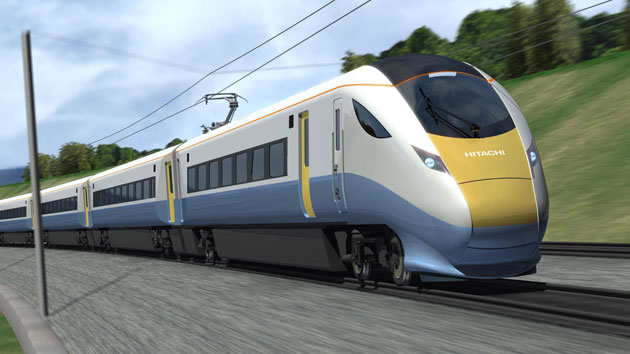
Factors That Affect the Operating Cost of Rail Transit
Since labor costs make up 70% of bus operating costs, it makes sense that they would also affect the operating cost of rail transit. Many legacy systems require two employees per train - the driver and a guard who opens and closes the door from a position usually around the sixth car of a subway train. As technological advances now allow the doors to be opened and closed safely by the driver, absent union rules we should start to see more trains operated with one employee. In addition, at some transit agencies rail operators may be paid more than bus operators.
The cost of electricity also affects the operating cost of rail transit as 99% of all rail transit projects use electricity. For example, as electricity is twice as expensive in California as it is in Washington we would expect that on this basis alone it would be more expensive to operate a light rail line in Los Angeles than it would be in Seattle.
In addition to costing more to build, underground sections tend to be more expensive to maintain. Subway stations require heating, cooling, and station attendants that may not be necessary at surface stations. Learn more about the operating cost differences between bus and light rail .

Factors That Affect the Capital Cost of Rail Transit Projects
By far the biggest factor that affects the cost of rail transit projects is whether the alignment will be at grade, elevated, or underground - with underground projects costing much more than elevated, which costs more than at grade. In addition, the fact that community and political demands dictate that almost all subways be built with deep bore as opposed to cut-and-cover techniques adds even more to the cost. Subway costs can be further increased depending on the conditions of the soil and the amount of pre-existing underground infrastructure that the subway needs to avoid.

The number of stations also adds to the cost of rail transit projects, particularly for underground sections where a station can easily cost $100 - 150 million. In an attempt to engage in value engineering , some projects will save money by removing stations even if it leaves too much of the line's corridor without being able to access it .
Any ancillary infrastructure that needs to be built will also add to the cost. For example, brand new lines and significant extensions of existing ones will need a maintenance facility, while shorter extensions of existing systems may be able to use the existing yards. Park and ride lots and bus transfer loops are other examples of non-rail related project that add to the final bill.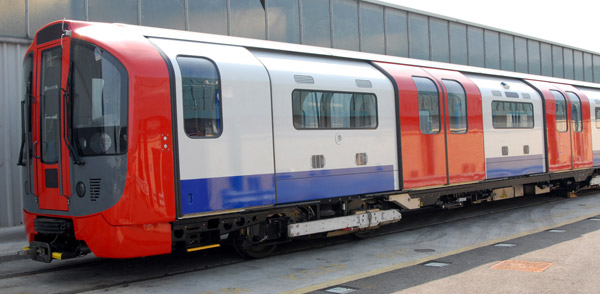
Now that we have an idea of the kind of costs that make up a rail project, let us look at the cost of some recent North American projects. Note that these cost figures are for capital and not operating costs .
 Recent Streetcar Project Costs
Recent Streetcar Project Costs
Streetcar lines are distinguished from light rail lines primarily in the fact that they stop as often as buses - every 1/8 of a mile or so - and cover much shorter distances. In the United States, the cost of recent projects has ranged from $20 million per mile for an one track extension of the existing St. Louis rail system to $50 million per mile for streetcars in the First Hill area of Seattle and connecting downtown Tucson to the University of Arizona campus.

Recent Light Rail Project Costs
The cost of recent surface light rail lines has ranged from a low of $43 million per mile in Norfolk, VA to a high of $204 million per mile for the new Milwaukie line in Portland. Los Angeles's Crenshaw Line , which includes short subway sections, clocks in at $165 million per mile. In Toronto, the Eglinton LRT line, which consists of almost a 50/50 split between surface and subway operation, is estimated to cost C$403 million per mile, which as of May 2012 was about equal to US$400 million per mile. In contrast, the Canada Line in Vancouver, which is about 70% underground with most of the rest being elevated, only cost C$177 million per mile - a low amount attributed to its cut-and-cover construction and very short station platforms (at 50m they can only accommodate two car train sets).

Recent Heavy Rail Project Costs
Due to its requirement for compete grade separation, heavy rail is significantly more expensive to build than any other rail line. Recent costs range from an estimate of $251 million per mile for the BART San Jose extension to a staggering $2.1 BILLION per mile for the Second Avenue Subway in New York - a number also reached by the East Side Access project to allow the Long Island Railroad to enter Grand Central Station. Long stretches of surface running and few stations probably help to explain the relative bargain of the BART extension and the Washington Metro extension to Dulles Airport ($268 million per mile), while the sheer number of existing subway tunnels (and perhaps a bit of New York City corruption left over from the Tammany Hall days) accounts for the astronomical cost in New York.
Recent Commuter Rail Project Costs
Because commuter rail lines generally use existing tracks and rights-of-way, they generally are much cheaper to build than other rail lines. Unfortunately, freight railroad tracks rarely go anywhere commuters need to go. Recent commuter rail start up costs have ranged from $1.3 million per mile for Nashville's Music City Star (a line which is mostly single-tracked) to a high of $26 million per mile for the Seattle Sounder.

The Cost of Rail Projects On Other Continents
Much has been made of how much cheaper it is to build rail projects in other continents, especially in Madrid, Spain. Direct comparison with the United States and Canada is difficult because other countries may require a much less stringent planning and review process as well as having lower labor and safety standards.
Suggested Reading
Suggested Reading
Suggested Reading
Related Articles
- What Are the True Operating Cost Differences Between Bus and Light Rail?
- Value Engineering: How Project Managers Attempt to Stay Within Budget of a ...
- Transit Myths Part I
- Review of California High Speed Rail Business Plan Part III - Phasing
- Art In Transit
Overview of the Bus Rapid Transit versus lightraildebate
By Christopher MacKechnie, About.com GuideOverview of the Bus versus Rail Debate in Transit

After the glory period of transit culminated with record high ridership during World War II, transit ridership went into a steady decline that has only halted relatively recently. From the end of World War II until the 1980s extensive streetcar networks that had been found in virtually every city in the United States had been dismantled and replaced with buses. The handful of cities that had constructed subway systems in the late 19th and early 20th century saw them fall into disrepair. By the late 1970s the prevailing American view was that only the poor and downtrodden rode public transit. In fact, between the end of World War II and the 1980s only a handful of new transit capital projects came on line, most notably the Washington Metro and San Francisco's BART.

However, the 1980s saw a slow rebirth towards the transit renaissance we find ourselves in today. After Edmonton got the ball rolling with the opening of their light rail system in 1978, San Diego followed with the inauguration of their initial rail line to the Mexican border in 1981. In the years since many cities have opened light rail lines, including Sacramento, Portland, Seattle, Salt Lake City, Phoenix, Denver, Dallas, Minneapolis, Saint Louis, Houston, Charlotte, San Jose, and especially Los Angeles. Arguably, some of the cities in the above list do not have enough transit ridership to support the operation of these more expensive rail systems, which can carry many more people than buses but have a unit cost per hour of up to three times that of a bus. San Jose in particular has been mocked by opponents of light rail transit as a "boondoggle" due to its relatively low rail ridership.

The ever increasing capital cost of light rail networks has recently caused observers in other cities to think of ways that transit could be improved for less money. Thus, the concept of bus rapid transit (BRT) was born. By mimicking what they believed set light rail apart from the common bus system - special vehicles, fare prepayment, and (sometimes) segregated right of way, bus rapid transit proponents believed they could achieve all the goals of light rail at a fraction of the cost. Although the concept of bus rapid transit has been successfully implemented in other cities such as Ottawa, Pittsburgh, and Curitiba, Brazil since the 1970s it has only been in the past ten years that bus rapid transit systems have come on line in the United States. Los Angeles is the preeminent bus rapid transit city in the United States, with its segregated right of way Orange Line and bus rapid transit "light" routes that are basically renumbered express bus routes with a different paint scheme; other cities in the United States that have opened bus rapid transit lines in recent years include Las Vegas, Cleveland, Boston, and Eugene, Oregon.
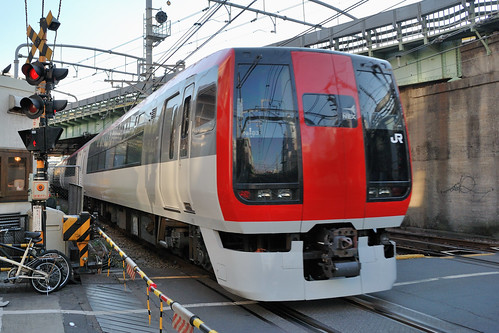
It is important to note that in today's planning of transit expansion, the traditional subway is almost never on the table anymore. In fact, with the exception of New York's Second Avenue Subway and Los Angeles's Wilshire Subway, it is likely that no brand new subway line will be constructed in the next thirty years in the United States (this does not include short extensions of existing subway lines by BART, the Chicago Transit Authority, and Washington Metro). This fact is primarily caused by the huge cost of constructing traditional subways in conjunction with the relatively low density of American cities.
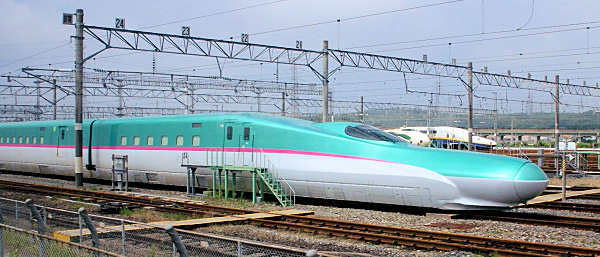
Instead, transit expansion planning invariably comes down to two modes: light rail or BRT. Light rail supporters and BRT supporters line up on their separate sides with their usual arguments promoting their own mode and disparaging the other. Light rail supporters usually argue that Americans do not want to ride buses, that the so-called permanence of light rail (i.e. the tracks will never be removed) promotes real estate development and higher property values, and that light rail is faster than buses because it is on a segregated right of way and does not have to deal with other traffic. BRT supporters usually promote buses as more flexible than rail systems, but usually rely on the lower cost of BRT versus rail as their main argument. In separate articles I examine these arguments in more detail.
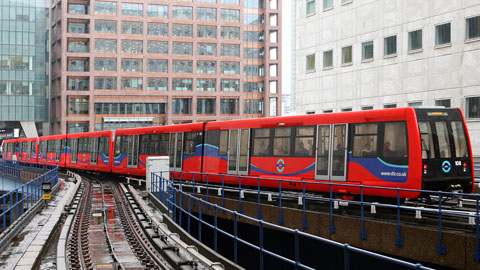
The obvious question is: which mode is appropriate in my city? Is my city ready and willing to change zoning regulations so that high density mixed use buildings can be built at rail stations? If not, then BRT is the clear choice because without high density rail will not be successful. Do I expect enough passengers to ride my proposed light rail system so that I can operate three car trains that can carry up to five hundred people every ten minutes or more during the peak period? If not, then BRT is the clear choice because I will not have enough passengers to overcome the increased cost of operating rail. While one three car light rail train can carry as many people as eight regular sized buses, if I am not filling up the train I do not need the extra capacity.

This debate is probably the most politicized in all of transit. Advocates on both sides toss around facts and arguments that sound believable but are often taken out of context. Taking them at face value is similar to taking a political attack ad at face value. Before making a decision either way I urge people to do some research on their own. I now present some case studies that should factor into the final decision. Light rail success: Los Angeles's Blue Line advanced the cause of light rail considerably when it opened in 1990. Currently operating every five minutes during the peak period and carrying on average more than 80,000 passengers on a given weekday, the Blue Line is often crowded. However, capacity constraints caused by its street running segment mean that service levels cannot be increased.
Light rail failure: San Jose's Green Line was built to provide high quality transit service to Silicon Valley. Unfortunately, the dot.com bust happened just after it opened in 1999. Today, all of San Jose's rail lines together only carry 34,000 riders per weekday. The Green Line now operates only every thirty minutes during the midday period and ceases operation at 10:30 P.M.
Bus Rapid Transit success: The Ottawa Transitway system has been in operation for more than thirty years. Recently discussion has been underway about a conversion of the transitway to a rail line due to congestion caused by the number of buses entering a short on street segment in the downtown area. The lower capacity of BRT simply cannot deal with the huge demand for quality transit in Ottawa, Ontario. Similarly, in Los Angeles, Metro is petitioning the state of California to allow them to operate 65 feet buses on the Orange Line to handle the demand; additional buses cannot simply be added on the line because the signal priority will not work if buses operate more frequently than every four minutes.

Bus Rapid Transit failure: Not really a failure, but a cautionary tale about using BRT as a "one size fits all" solution: in December of 2010, Los Angeles Metro plans on cancelling some service on certain Metro rapid lines that have not met expectations. Lines being cancelled do not operate at a fast enough speed, do not have a high enough average trip length, or simply do not carry enough passengers.
Overall, both light rail and BRT have a vital part to play in the improvement of transit in both American and worldwide cities. I believe in all cases there is clear cut winner; the trick is conducting the necessary analysis to see which one comes out ahead.

Suggested Reading
Suggested Reading
Suggested Reading
Related Articles























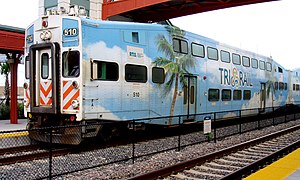
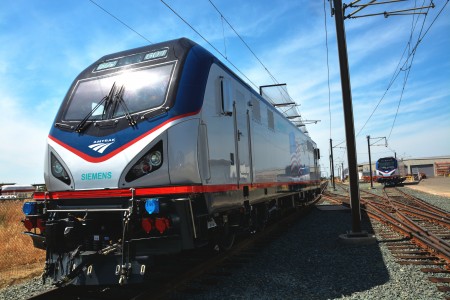

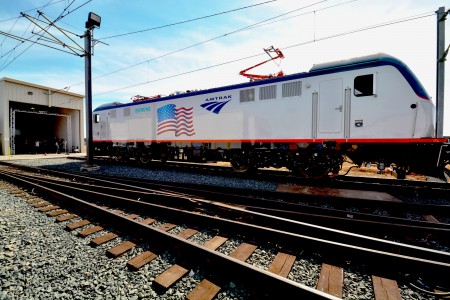
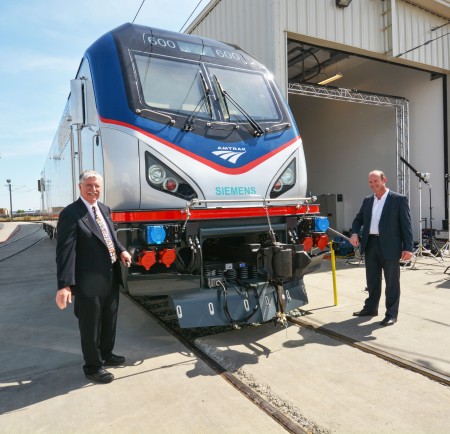

No comments:
Post a Comment